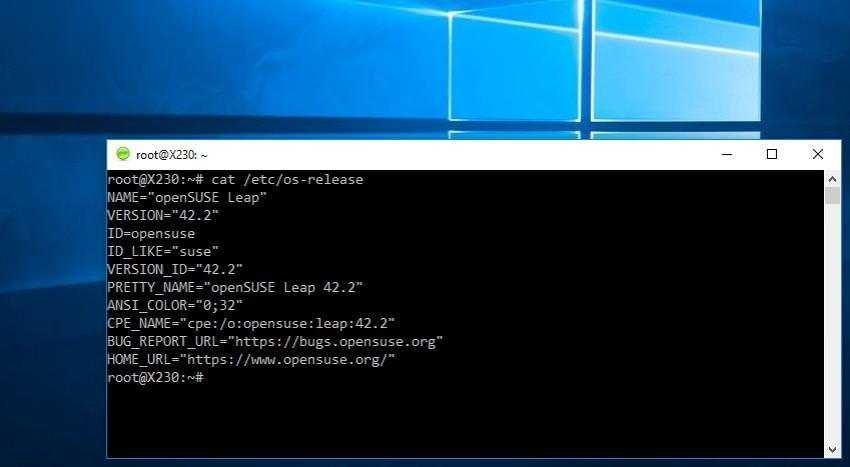Not yet approved, but it appears that now you can use openSUSE Leap or SUSE Linux Enterprise Linux operating systems within Windows 10 via Windows Subsystem for Linux (WSL).
Όπως ίσως γνωρίζετε, οι τελευταίες εκδόσεις του λειτουργικού συστήματος Windows 10 έρχονται με ένα πλήρες Bash shell του Ubuntu που οι προγραμματιστές μπορούν να χρησιμοποιήσουν για να τρέξουν λογισμικό Linux ή εντολές απευθείας στην οθόνη των Windows. Ονομάζεται “Bash on Ubuntu on Windows,” και είναι προσβάσιμο από το μενού Starts in Windows 10.
SUSE Senior Product Manager Hannes Kühnemund was probably unhappy with the new addition, saying that Microsoft chose to launch a "wrong" Linux distribution, by default, in the Windows Subsystem for Linux in the latest build of Windows 10.
So he decided to add SUSE to WSL.
“Why SUSE? Well, SUSE knows what it has been doing since it developed Linux since 1992. Try to find a Linux distributor that is bigger. You will not find it, "says Hannes Kühnemund.
If you're a fan of the SUSE distribution and want to use your favorite distribution inside Windows 10, Kühnemund will help you add it directly to Microsoft's operating system. Yes, forget it Interactive machines and dual boot and let's add openSUSE Leap 42.2 to WSL.
The following instructions also work for SUSE Linux Enterprise Server (SLES) 12 Service Pack 2, but you will need to download a different file. So, if you are ready, you must first activate it WSL by following this guide. Be sure to create a regular user (password) during installation.
Run the first command to download the openSUSE Leap 42.2 docker userspace.
wget -O openSUSE-42.2.tar.xz https://github.com/openSUSE/docker-containers-build/blob/openSUSE-42.2/docker/openSUSE-42.2.tar.xz?raw=true
After that, open the Linux bash shell from the Start menu, and run the following commands to extract the file and exit the shell. Ignore any warning during implementation of these commands.
sudo mkdir rootfs
sudo tar -C-rootfs -Jxf openSUSE-42.2.tar.xz
exit
Once done backup your “Bash on Ubuntu on Windows” installation using the commands below. Then you can copy the new rootfs (root file system) of openSUSE Leap 42.2. Next, you need to give root as the default to the user with the last command.
cd% localappdata% \ lxss \
rename rootfs rootfs.ubuntu
move. \ home \ \ rootfs. \
lxrun / setdefaultuser root
That's it. You can run openSUSE or SLES userspace in Windows Subsystem for Linux.
![]() As a bonus, you can also override the default icon with the downloadable SUSE favicon from here.
As a bonus, you can also override the default icon with the downloadable SUSE favicon from here.
Then run the commands
cd% localappdata% \ lxss \
rename bash.ico Ubuntu.ico
rename Saki-NuoveXT-Apps-suse.ico bash.ico





